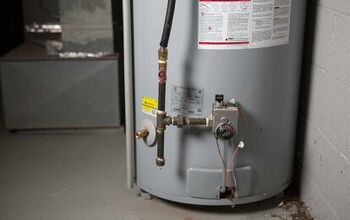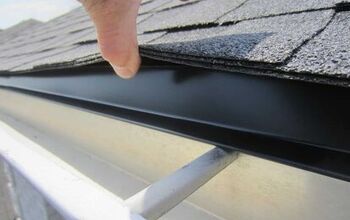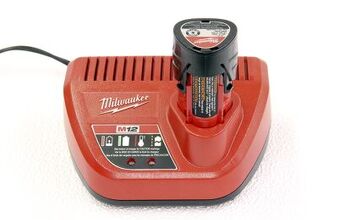How To Stop Perennials From Spreading

Many homeowners look forward to perennials coming back each year. However, your garden can quickly turn into a nightmare if your perennials spread far beyond control. That’s why you’re not alone if you’ve ever wondered how to stop perennials from spreading.
You can stop perennials from spreading if you bury plastic landscape edging and create a border. This makes a barrier that stops rhizomes from spreading horizontally underground. You can also cut the bottom out of a pot or drill holes in it, bury it, and plant the perennial within its borders to stop the plant from spreading.
Otherwise, you can treat the perennial with an herbicide, but you must be careful. If you’re not careful, you may accidentally kill nearby plants. Follow along as we explore how to stop perennials from spreading.
Why Are My Perennials Spreading So Much?
Perennials typically spread because of rhizomes, and they can also spread when seeds scatter. Rhizomes are stems that grow horizontally in the soil, and many people mistake them for roots. Because they grow horizontally, you may see more of the same plant pop up beside the original perennial you planted.
Creeping perennials, like creeping phlox, are especially known for spreading quickly. Stolons are above-ground stems that perennials have, which can also help them spread. Many perennials also have flower heads that can scatter seeds when the wind blows.
Some animals and insects can also spread seeds when they land on and brush up against flowers. That’s why so many people deadhead their perennials to stop them from spreading. Otherwise, your perennials can take over your yard.
How To Stop A Plant From Spreading
1. Use A Pot
Planting certain perennials without a pot is a sure way to get them to spread uncontrollably. That’s especially true for plants like daylilies, catmint, and sedum. However, you can avoid this problem if you put the perennial in a pot before you plant it in the soil.
Take a simple plastic pot and drill several holes in the bottom of it or remove the bottom entirely. That way, you can ensure water will pass through the pot and nourish the plant’s roots. Next, dig a hole in the ground that is the size of the pot, and make sure it’s deep enough that the top of the pot is level with the ground.
Stick the pot in the ground, fill it with loose soil, stop, plant the perennial, and top the rest off with soil. The pot should stop the plant from spreading like wildfire. This is the easiest way to stop perennials from spreading, even if you can’t do it throughout your whole garden.
2. Lay Mulch Or Gravel
It’s no secret that mulch is quite dense, and you can use that to your advantage to stop perennials from spreading. Identify sections in your garden where perennials appear to be spreading more than you’d like. Next, gather some dense mulch or gravel and bring it out to your garden.
Lay some mulch on the ground in the area around the perennials in question. Pack the mulch or gravel tightly to prevent plants and weeds from popping up. If done correctly, the mulch or gravel should stop perennials from spreading and sprouting.
That’s because the mulch will slightly suffocate the soil. This can stop the perennial’s roots from spreading in the area where the mulch or gravel is.
3. Bury Landscape Edging
You can stop perennials from spreading if you bury landscape edging in the ground. Landscape edging creates a barrier that can stop roots from spreading within the ground. However, you must do some research to see how deep a particular perennial’s roots spread.
Otherwise, you may waste time and money on landscape edging that isn’t deep enough to block the plant’s roots from spreading. Luckily, landscape edging comes in several sizes, and you can choose between several materials. Plastic is a great option because it’s durable, won’t degrade in the ground, and doesn’t cost much.
4. Deadhead The Plants
Deadheading is when you remove dead flower heads to keep a plant from spreading. This is effective because flowers often spread seeds from flower heads, and the wind can carry them far. Ideally, you should deadhead your perennials as soon as you notice the flower heads appear discolored and dead.
This low-effort method can help keep your garden under control. Experienced gardeners often deadhead their plants throughout the growing season. However, it’s a great idea to research the growth patterns of the plants in your garden.
That way, you can prepare yourself to deadhead your perennials on a regular schedule. Seeds form right after flowering is done, so you have a short window before they spread. Don’t miss your chance, or else it’ll be harder to get your perennials under control.
5. Cut Them Back
Some perennials, like geraniums and hydrangeas, grow faster than others. The easiest way to control fast-growing perennials is to cut them back before they spread too far. Ideally, you should cut back enough that the plant is 1/3 to ½ the original size.
Keep in mind that pruning can encourage growth in some cases. That’s why you must keep up with this and cover the nearby ground with mulch or another plant to stop the perennial from spreading. All it takes is some simple pruning shears.
It’s important to clean your pruning shears with isopropyl alcohol before using them on another plant. This can stop unintentional spreading and plant contamination. However, cutting plants back isn’t a permanent solution, so you must do it in conjunction with other methods.
6. Use Herbicides
Herbicides are useful for stopping plants from spreading, but they should be a last resort. That’s because herbicides aren’t always great for the environment. It’s also easy to accidentally spray herbicides on nearby plants that you don’t want to kill.
Roundup is one of the best herbicides, but you can also use anything that contains triclopyr. Some people prefer to use a brush to apply herbicides. That’s a great idea if the perennial in question is close to some plants that you love.
Otherwise, you can spray the herbicide on the perennials using a narrow nozzle. This can minimize the spread to prevent the herbicide from splashing around. It may take a few tries before the herbicide kills the perennial.
Should You Remove Perennials Before Selling Your House?
Don’t remove your perennials before selling your house, as it may impact curb appeal. A lack of curb appeal can make it hard to sell a house. Potential buyers pay attention to yards and gardens as it often catches their attention before they notice anything else about the house.
However, you should get your perennials under control if they’ve spread too far. For example, you may discourage buyers if your garden appears unkempt and mismanaged. Keep up with yard work throughout the selling process to impress potential buyers.
Summing It Up
The best way to stop perennials from spreading is to take a pot, remove the bottom, put it in the ground, and plant the perennial. That way, the pot will create a barrier that stops rhizomes and roots from spreading too far horizontally. It’s also a great idea to deadhead your perennials to stop the seeds from scattering in the wind.
Related Guides:

Nick Durante is a professional writer with a primary focus on home improvement. When he is not writing about home improvement or taking on projects around the house, he likes to read and create art. He is always looking towards the newest trends in home improvement.
More by Nick Durante













![10 Best Scroll Saws for 2022 [Ultimate Reviews & Buyer's Guide]](https://cdn-fastly.upgradedhome.com/media/2023/07/31/9070684/10-best-scroll-saws-for-2022-ultimate-reviews-buyer-s-guide.jpg?size=350x220)
![10 Best Cordless Leaf Blowers – [2022 Reviews & Ultimate Guide]](https://cdn-fastly.upgradedhome.com/media/2023/07/31/9070789/10-best-cordless-leaf-blowers-2022-reviews-ultimate-guide.jpg?size=350x220)







![Cost To Drill A Well [Pricing Per Foot & Cost By State]](https://cdn-fastly.upgradedhome.com/media/2023/07/31/9074980/cost-to-drill-a-well-pricing-per-foot-cost-by-state.jpg?size=350x220)




